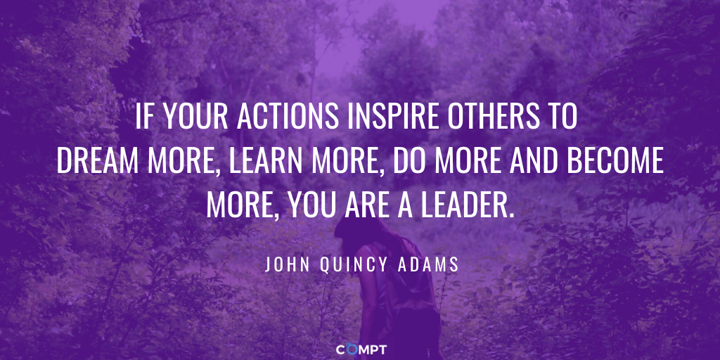People tech investment grew by 80% last year and it’s no wonder why. Companies are fiercely competing over the most valuable resources: highly-skilled and productive employees. But as needs and attitudes have shifted in recent years, tech companies have looked for new ways to satisfy their workforce without breaking the bank.
Here are six common mistakes companies have been making when it comes to delivering delightful and cost-efficient perks.

1. Not making them inclusive.
No-one wants to feel like an afterthought but often perks can have this effect when they aren’t executed well.
Whether it’s a happy hour during your dry month, Bagel Friday when you’re gluten-free, or an office gym when you prefer to work out with your partner, perks can often miss the mark.
If you’re looking to remain competitive and grow in today’s tight labor market, providing perks that are inclusive isn’t a “nice-to-have”; it’s a MUST-have.
Why is perk inclusivity so important?
There is a more diverse workforce.
There are currently five generations at work, and they all want and need something different. Gen Z wants mentorship, millennials are still paying off student loans and are parents, and then there’s Gen X, Baby Boomers, and the Silent Generation who all want something different.
There are more remote/hybrid team members too.
A recent report found that 70% of people work remotely at least one day a week. If you’re trying to build an onsite Disneyworld for your team and the trend toward remote work continues, nobody will be there to use it. Even if only a few folks are remote — they’re often subjected to sitting on the sidelines as everyone on-site enjoys their company-catered meal at a company meeting.

It’s essential.
The market keeps shifting to the new norm, continually upping the ante. In the beginning, perks were just a bonus at the office, but as companies continued to compete to make their place the best company to work at, they simultaneously increased the demand for them. Now people don’t just want perks, they expect them.
2. Not being strategic enough
In the industry-famous piece “HR Reinvented: The New People Teams,” author and VP of Greenhouse, Maia Josebachvilli, makes a bold, yet accurate claim:
What I’ve learned is that traditional HR departments, which have been around for 40 years, have long been focused on ensuring compliance and decreasing liability for the organization. On the other hand, the main objective of People Teams is to maximize the value of employees and drive business results. Clearly, there’s a difference here — a difference that is just beginning to emerge and will be the defining chasm between good and great companies.
If you’re running a People Team, then your perks should reflect the same goals of maximizing employee value and driving your business forward.
So how can People Leaders be strategic with their perks? By:
Using perks to deliver value to the company mission, vision, and goals.
Too often, people choose perks that are “hot” or “weird” without thinking of the broader missions, values, and goals of the company. Before you pick your next perk, focus on how it helps emphasize the organization and what it’s trying to be and achieve.
Making sure their perks scale (up and down).
A big question we get at Compt from CPOs, CFOs, and other c-suiters is — how will the perks market be impacted when a recession hits? Many companies will have to pick and choose which perks they’ll keep, creating a backlash among those who lost the most benefits. With a perk allowance on the other hand, companies simply decrease the amount they contribute to every employees’ perk allowance or stipends. So while you may have less money to spend, you can keep the personalize and everyone feels the shift equally. It’s a way to be inclusive and scalable in any market.
Keeping costs in mind.
As pointed out above, the c-suite is notorious for their concern about the bottom-line (can you blame ‘em?). But it also falls on you to think about what would provide the most benefit to the overall organization. If you found a way to cut the time or money it takes to get something done, wouldn’t you take it? There’s plenty of perk software and approaches that’ll help you keep costs down and make sure every cent spent is well-spent.
Woof — this was a difficult part to write. Nobody likes to hear that they’re not strategic enough (especially me), but it’s the inconvenient truth. This is because HR was never encouraged to think strategically, until now. It’s part of the shift from HR to People Teams, and the best, most committed, people leaders are taking the “opportunity bull” by the horns.
3. Not selecting a flexible approach
We often hear from people leaders that they feel their employees’ needs and preferences are a moving target that they can’t quite hit.
One minute they love yoga, the next they want a peloton in their office gym, and then they want a Headspace (or wait is it Calm?) meditation subscriptions; it’s a Sisyphean task.
Trying to keep up with people’s changing preferences is a losing and reactionary game.
As I already mentioned, today’s teams are not only more diverse, but people’s preferences are more varied and change quickly. There’s a constant flow of new methods to help us achieve our work and life goals, and there’s no shortage of vendors or companies trying to help us along the way. A recent episode from the Future Tense podcast noted that there are over 10,000 mental health apps on the Apple and Android stores (so I guess we have no excuse for not being focused).
If, as people leaders, we set the expectation that we know which apps or vendors are best, then we position ourselves as the ultimate concierge (which is excellent if that’s your thing). However, most people leaders we work with deliver much greater happiness to their employees by letting their team choose their own perks, and it also frees up People Teams’ highly valuable time too.
4. Complicating the management process
Regardless of how many perks a company offers, someone on the team still has to pick, pilot, purchase, distribute, manage, and maintain them. That’s a lot of work.
Traditionally, the tools people use to manage these processes are email and spreadsheets but these are time consuming and inefficient. If you’ve ever spent hours answering employee questions, reviewing long email chains, or managing perks in spreadsheets, you’ve probably already concluded that there must be a better way.
Fortunately, the last year has seen tremendous growth in the perks management sector. If your perks are too much to manage, you’ve likely reached the Perks Tipping Point, and it’s time to consider your options for managing perks.
5. Neglecting IRS compliance
Many of today’s perks, like employer-provided meals or onsite yoga are taxable benefits for both employees and employers. Chances are, you’ve not only heard your finance team banging the drum on this within the organization, but it’s also something they expect you to figure out.
What are some perks that need to be tracked and taxed? Let’s start with what doesn’t need to be taxed — anything that is a cell-phone reimbursement, continuous learning, or commuter benefits (but only up to certain IRS limits — and total bummer, they do NOT include cycling to work!). Now, what needs to be taxed? Everything else. Anyone who gets an on-site massage, catered lunch, or consultation with the nutritionist. And even tracking and taxing who showed up for yoga on Tuesday in the company gym.
The worst part is that it’s complicated and time-consuming to ensure compliance when doing this all manually, but many perk software systems aren’t set up for this either.
So, when you’re on the market for a perk management system to help you manage, streamline, and scale this stuff, always make sure they’re IRS compliant.

6. Not thinking big enough
When perks first emerged, employees didn’t have many expectations and there certainly weren’t any articles or instructions to follow on how to offer “the best” ones. They were just considered the cherry on top of a good salary and benefits.
But over time, top companies began to see them as an important investment, leading to the arms race that we are still experiencing.
If we continue this trend, what does that mean for the future of perks?
At Compt, we believe that if the world were to rebuild perks from the ground up, we wouldn’t create the system we have now.
We’d create a way people could get access to what they truly want and need. Everyone would get something that has a genuine, measurable impact on their lives.
We’d give our team members the chance to splurge on some business books so they can master their craft and get a deserved promotion. Treat them with something that they wouldn’t normally be able to justify for themselves, and have been secretively wanting like a massage, fencing lessons, or a mental health app so they can meditate after work and be more present. Or take the stress off an employee’s back by helping them pay down their student loans.
We all have different needs and when perks account for that, the contribution to the employee isn’t just beer or catered lunches, they can become so much more.
We are barely scratching the surface of what perks can achieve for employees and employers alike, and when done right, we, together, can help people to dream more, learn more, do more, and become more.

We believe there’s a better way for companies to put their money where their culture is, which is what we're building at Compt.
If you want to make delight your competitive edge, learn how with perk allowances & lifestyle spending accounts or schedule a demo of Compt.
H/T to the brains editing this piece, Matthew Davidson.
Compt is the #1 employee stipends platform that gives your people the freedom to choose the lifestyle perks that are best for them and their always evolving needs, even when remote. Interested in learning how Compt might benefit your company? Consult with our team or request a demo.
